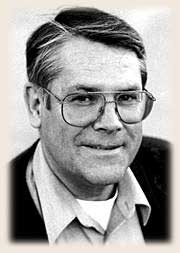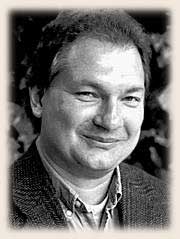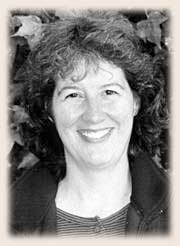| SOIL,
FOOD, & PEOPLE CONFERENCE
March 27-29, 2000
GROW BIOINTENSIVE conference on the U.C. Davis campus
Home
| Intro | Presentations
| Breakout Sessions | Friends:
Old & New | Sponsors
PRESENTATIONS
Soil Quality Options
John Doran | William
Horwath | Kate Scow
 |
John Doran is
a soil scientist and professor of agronomy at the University
of Nebraska, Lincoln. For over 25 years, he has conducted research
on microbial ecology as it relates to the development of sustainable
management systems which enhance soil quality, economic crop
production and environmental quality. |
Doran mentioned first that it is only when we
get together like this at larger venues that we realize how little
we as individuals know. He stated that a major challenge of sustainable
agriculture is translating science into practice.
He told the story of how, while studying agronomy
at the university, he had received "his first lesson in soil
microbiology" helping his future father-in-law plant potatoes.
Mistakenly tamping the soil after each potato was planted, he was
told about the geology, climatic conditions and soil needs of that
particular plot of earth, by a man who had only graduated from fourth
grade.
Doran gave that as an example of how we, with
all of our advanced technology, have gotten away from a basic understanding
of the natural world.
Doran stated that though industrial agricultural
practices have increased productivity, it has always been at a high
cost, and always subsidized by oil. He said when he first came to
the University of Nebraska in the mid-70's, many scientists could
not believe that our agricultural practices were impairing the environment.
But he believes we actually do have the technological capabilities
to adversely influence global functioning. Doran believes that one
of our greatest challenges at the present is to reduce our dependence
on fossil fuels.
He gave a couple of definitions of sustainable
agriculture and stated that giving value to soil health is one of
the most important avenues towards sustainability. He said "the
soil is a primary interface with the global environment."
Doran said that as a first step we need to define
what our goals are for sustainable agriculture and the strategies
that we will use to achieve those goals. His own priorities are
to:
- conserve soil organic matter,
- balance production with the environment, and
- provide better use of renewable resources to
get away from the use of fossil fuels and petro-chemicals.
He closed by saying that our children are
not going to care if we have defined sustainability, but whether
they and others have enough food to eat and a natural world to nurture
them.
top
 |
William Horwath
is a soil organic matter specialist in the Department of Land,
Air and Water Resources at U.C. Davis. His research emphasizes
the role of soil organic matter in controlling soil fertility
and the sustainability and productivity of managed and natural
ecosystems. He uses stable isotopes to understand the carbon
and nitrogen cycling processes that affect soil organic matter
and microbial-plant interactions. |
Horwath said that "carbon sequestration"
is a term used a lot these days that means pulling carbon out of
the air and putting it back in the soil to help alleviate the greenhouse
effect. They are looking for management practices that will help
to do that. But he stated that when carbons are put back in the
soil, it changes the way nutrients cycle through the soil.
Horwath's research has been comparing conventional,
low-input and organic systems, using crops normally grown in that
area (the Sacramento Valley). Inputs in the organic system included
compost, manure and leguminous cover crops. The low-input ("hybrid")
system relies on the cover crops as well as about half of the amount
of inorganic fertilizer as is used in conventional systems.
The conventional treatment uses "the best
of Green Revolution treatments," which he feels have done well
and have fed the world. After 10 years, the organic plot had an
increase of 10 tons of carbon per hectare. The low-input treatment
increased carbon by 5 tons. There was no change in the conventional
plot.
He said the introduction of a cover crop significantly
increased carbon, and when manure was added, the increase was even
greater. And he pointed out that this happened in an increased tillage
situation. As the carbon increases, so does nitrogen. When organic
matter is added, the C:N ratio remains the same. He stated that
these experiments have proven that in a hot, irrigated situation,
carbon can be put back into the soil.
Horwath said that when using inorganic fertilizer
in a conventional method, it is barely possible to get 40% of it
into the crop. But the fertilizer also stimulates micro-organisms
in the soil to release their nutrients. He stated that these are
the types of things we need to know to optimize nutrient management,
when manipulating carbon in the soil. Adding inorganic fertilizer
or manure to a vetch cover crop will increase the uptake of fertilizer
by the following crop by 2-1/2 %, while vetch alone will not affect
the uptake. He believes the data show that low-inputÑa hybrid
of conventional and organic agricultural systemsÑdoes the
best job and that we should look at this without bias.
After 10 years, there are no significant
differences in production of tomatoes and corn between any of these
treatments, which he looked on as a plus for organic and low-input.
They have not yet compared the economics of the different treatments.
top
 |
Kate Scow is
a professor of soil microbial ecology at U.C. Davis. Her research
includes the influence of environmental variables and management
practices on microbial community structure and function in soils,
and the effects of pollutants and fumigants on microbial populations
in agricultural and contaminated soils. |
Scow first showed a fascinating slide show of
greatly magnified microorganisms in various stages of activity,
as she said, "to whet the audience's interest." She stressed
how important microorganisms are in any kind of system, and particularly
in an agricultural ecosystem the drivers of carbon and energy
flow. Among other functions, they release the nutrients from pulverized
matter in the soil so they can be taken up by plants, help create
soil structure, and fulfill symbiotic relationships with plants.
Scow said that micro-organism activity and biomass are usually greater
in an organic soil.
Scow said there are numerous ways to measure soil
microorganisms, but that she has broken them down into three categories:
- count them,
- measure their activities (the kind of work
they do in their community), or
- look at their guts, break them down into biomass
and measure the resulting nitrogen and carbon.
She said there are new biological methods for
fingerprinting the soil to tell, for example, how a fumigant might
have affected it, or to assess the kind of research mentioned above
by William Horwath.
Scow stated that you can tell the difference
between organic and conventional soil communities but that the biggest
difference is found in the microbe populations that exist in the
soils growing different crops. She said she is now mapping soils
all over California to look at the differences in patterns.
top |